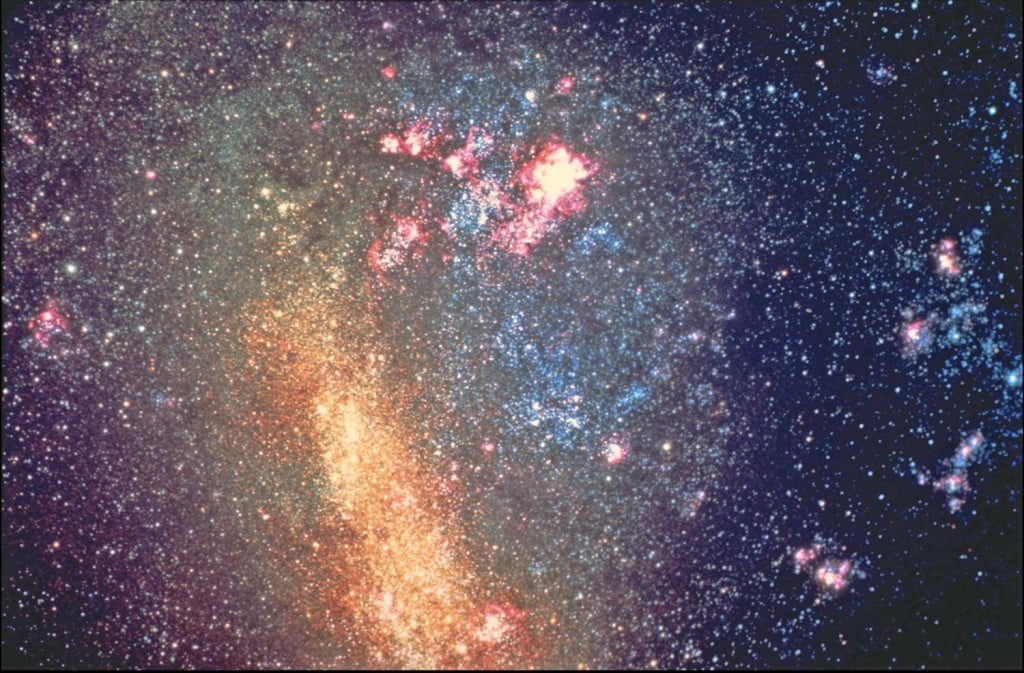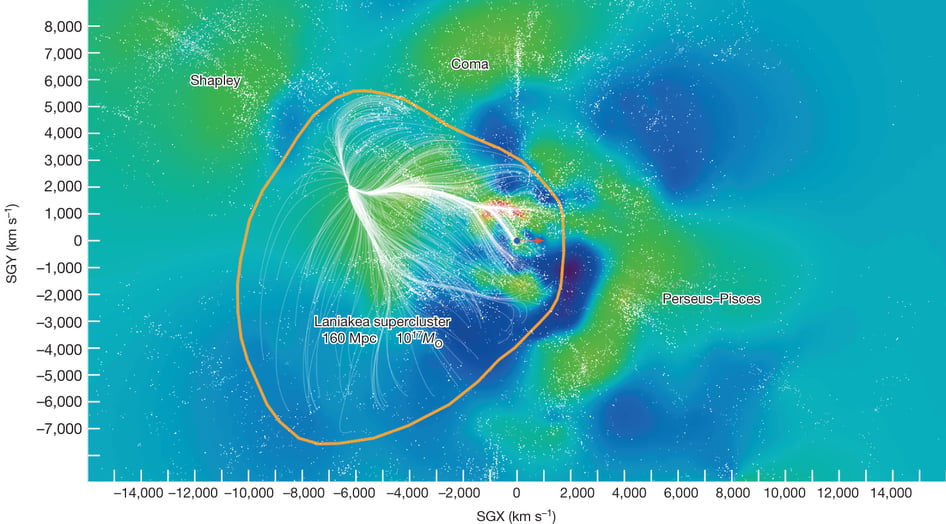The universe is endless, or so we believe, but is it possible to map the location of our home galaxy amidst a sea of black? Researchers at Hebrew University and an international team of astronomers have, for the first time, mapped out the location of our galaxy in the vast infinity that is the universe using new techniques. As part of their findings, they discovered that our galaxy is actually part of a supercluster that contains a mass of one hundred quadrillion suns and 100,000 galaxies. Talk about putting things here on Earth in proportion!
Mapping out galaxies with velocity
Superclusters are among the largest structures in the known universe. They are comprised of galaxy groups containing dozens of galaxies, and galaxy clusters containing hundreds of galaxies. When these groups and clusters of galaxies intersect, they create superclusters with poorly defined boundaries. A galaxy that is unfortunate enough to get stuck between two superclusters will be caught in a gravitation tug-of-war, with the balance of gravitational forces determining the galaxy’s motion.
SEE ALSO: SpaceIL’s Mission To The Moon Says Its Chances Of Winning The Google Lunar XPrize Are High
In the research, which appeared as a cover story in “Nature”, Prof. Yehuda Hoffman of Hebrew U’s Racah Institute of Physics, together with his partners, mapped out the velocity of galaxies throughout our local universe. Breaking all existing paradigms of knowledge regarding our galactic location, the researchers found that the galactic supercluster that contains the Milky Way (the name for our galaxy) is 500 million light-years in diameter. They also found that it contains a whopping mass of a hundred quadrillion suns in 100,000 galaxies. Using the forces of gravitational pull mentioned above and other methods, the team was able to map out the location, size and mass of our supercluster with more specificity than ever before.
Laniakea is the name of our supercluster
Led by University of Hawaii astronomer R. Brent Tully, the team named the supercluster “Laniakea,” meaning “immense heaven” in Hawaiian. The name honors the Polynesian navigators who used knowledge of the heavens to voyage across the immense Pacific Ocean.
Sign up for our free weekly newsletter
SubscribeSEE ALSO: Israel To Launch Satellite To Monitor Crops From Outer Space
The research group also clarified the role played by the Great Attractor, a mysterious gravity anomaly in intergalactic space that has perplexed astronomers for decades.
So, if you ever encounter an extraterrestrial and want to let them know within which supercluster they’ve landed, you’ll know to tell them Supercluster “Laniakea”, or “Immense Heaven.”
The research was conducted by Prof. Yehuda Hoffman of Hebrew University’s Racah Institute of Physics, R. Brent Tully of the University of Hawaii Manoa, Helene Courtois of the University of Claude Bernard Lyon 1, France, and Daniel Pomarede of the Institute of Research on Fundamental Laws of the Universe, France.
Photos: Virgo Supercluster/ Figure 2/ Phil Plait
Related posts

Resilient And Nutritious New Plant-Based Milk Aims To Make A Splash

Chocolate From Cultivated Cocoa Comes Without Environmental Toll

Plastic Fantastic: Startup Takes PVC Back To Its Crude Oil Roots






Facebook comments